
My family and I relocated to California in 2013 and having some time on my hands, I had the opportunity to have another go on a pottery wheel, after an experience of it at school. I fell in love with clay’s therapeutic benefits and using clay gave me an avenue for some creative desires struggling to get out. I became obsessed with the possibilities and endless learning opportunities.
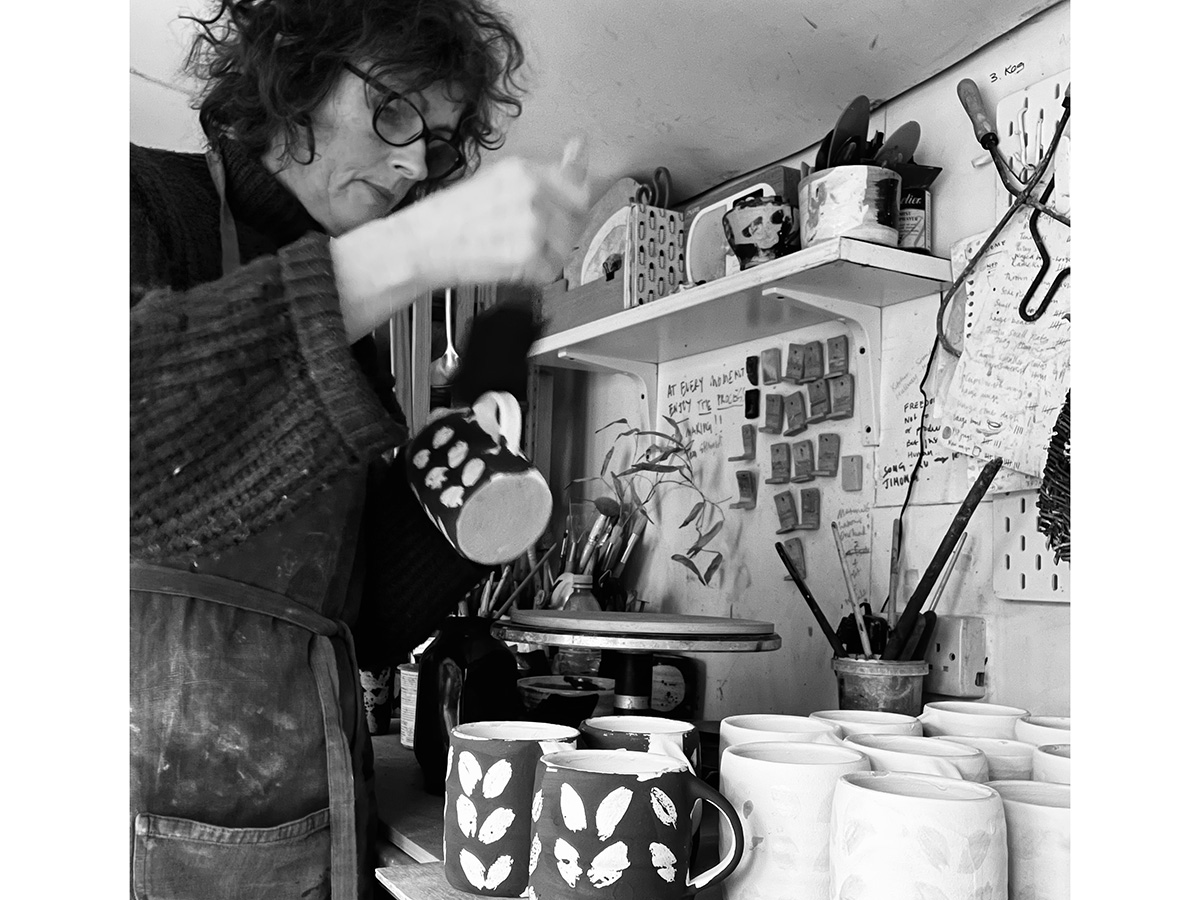
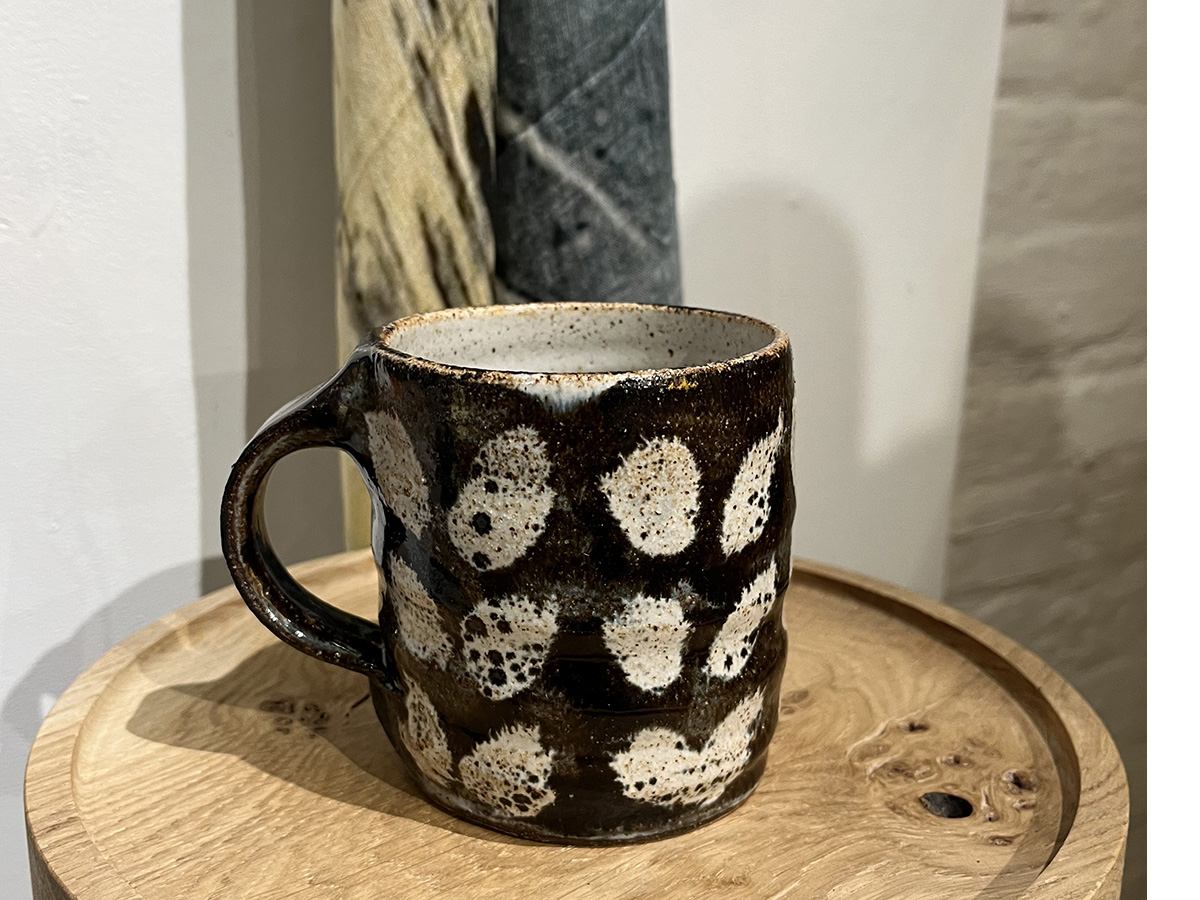
I have chosen to focus my practice upon tableware. The idea of making pottery for our simple everyday rituals, a cup of tea or coffee, or the sharing of a meal with loved ones, comes from my love of food, and food sharing occasions that stem from my childhood. Picnics and flasks of tea on long journeys, perching on the boot of the car, or sitting on one of those old checked blankets with the odd cub or brownie badge sewn in the corner. Or my father making us pancakes on a Sunday, and fresh home-made burgers on Saturday. It was a way to access warmth and togetherness with family and I hope to evoke those feelings when you use one of my pieces.
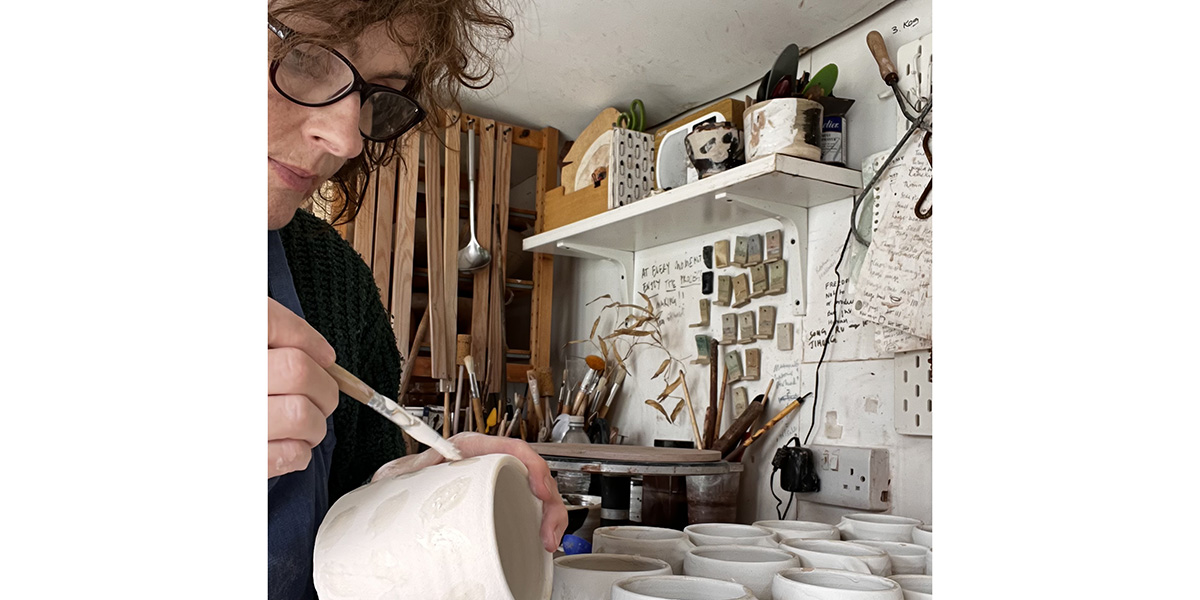
From the very first pots I made I chose to make simple marks on my work to enhance the surface. I have since been striving to develop a warmth and lived in or comfortable feeling to each piece. The wax resist technique that I often use, gives a depth of surface and texture that evokes similar feelings to the degraded and weathered surfaces that I see so often on my dog walks in the Sussex downs or along the beach in Brighton and nearby coastal towns. Peeling paint on the turquoise railings, lichens on fence posts and rust on the iron crosses holding farm buildings together. Thoughts turn to how long a washed up piece of wood has been swishing about in the sea, and where has it come from. The patterns created using the resist allow some degree of consideration and control over the surface marks, they are very much in contrast to the free and abstract marks I also love to make. I guess it shows two parts of my personality.
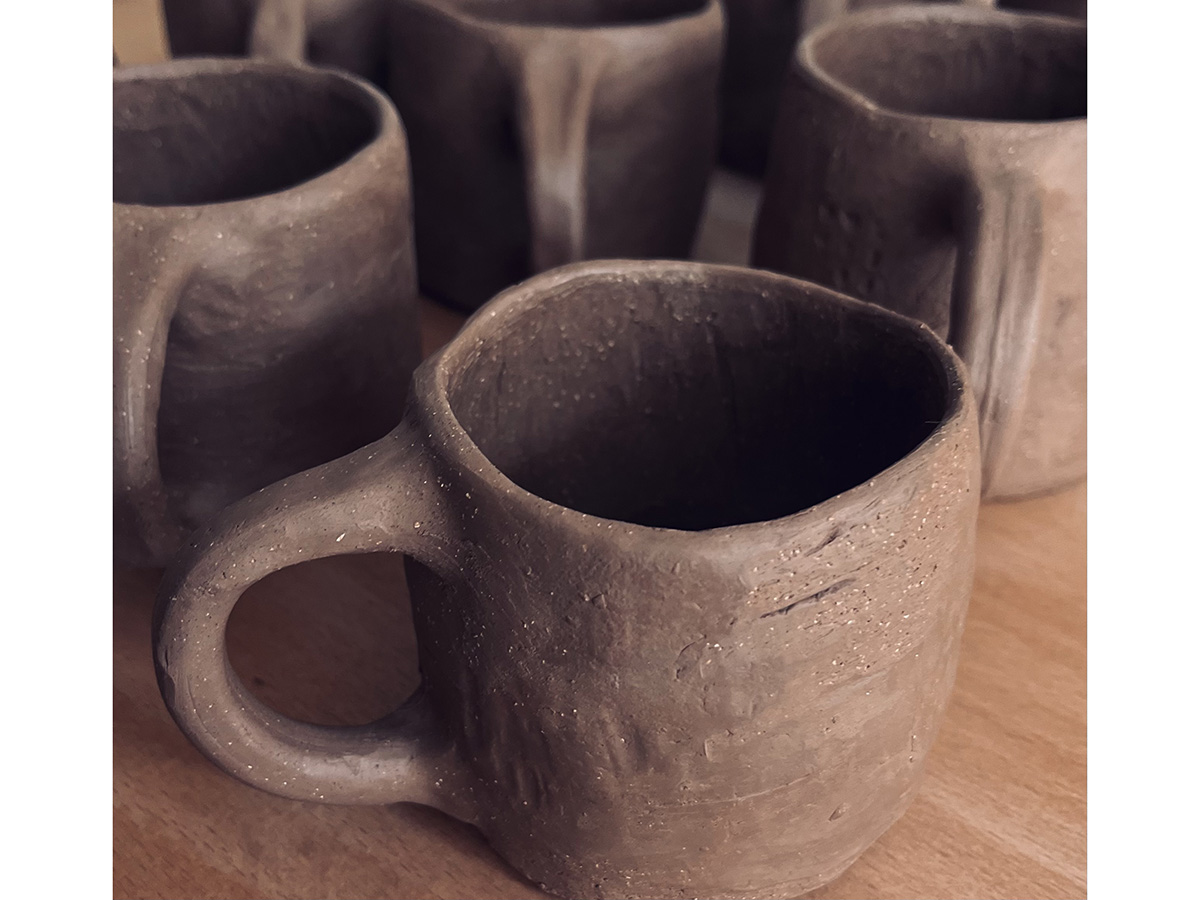
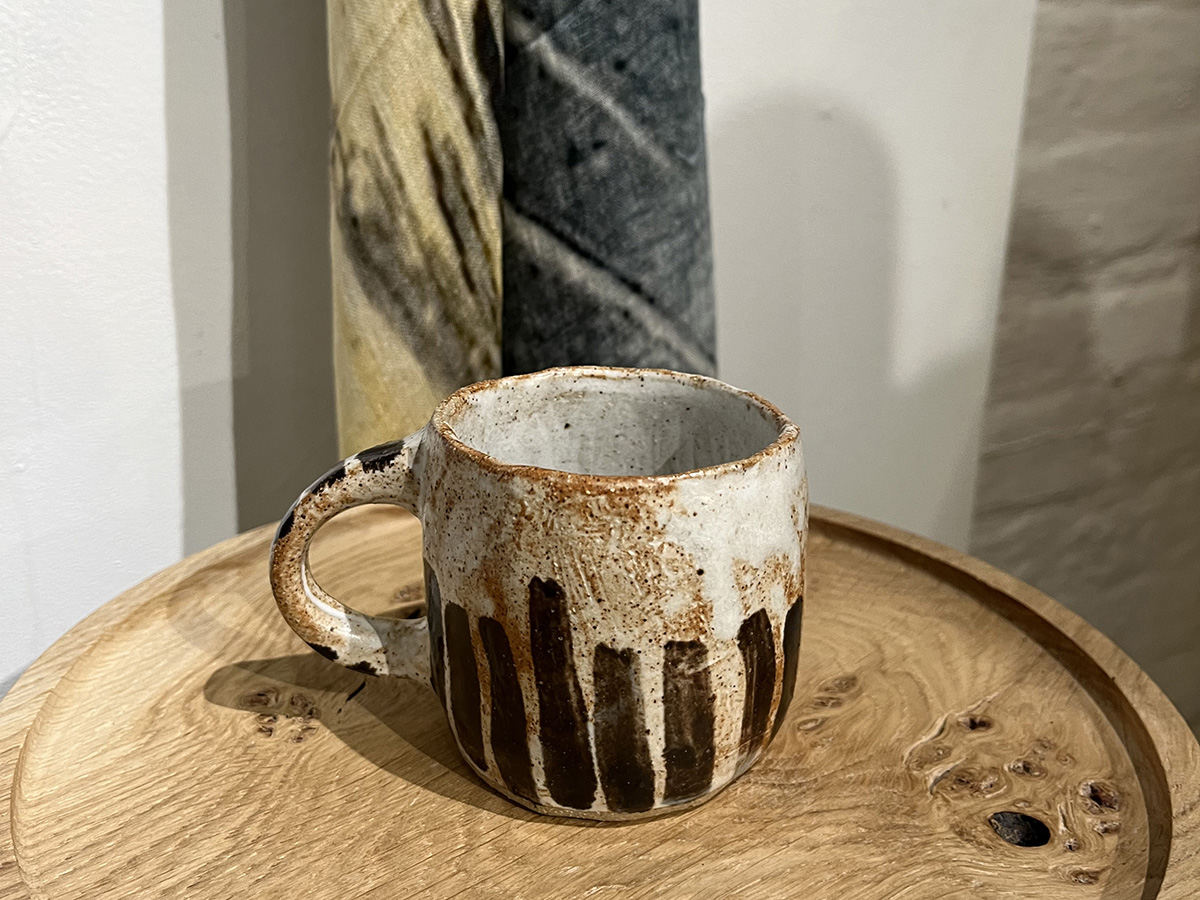
Nicola’s full collection is available now in the gallery with a selection also on our online shop.